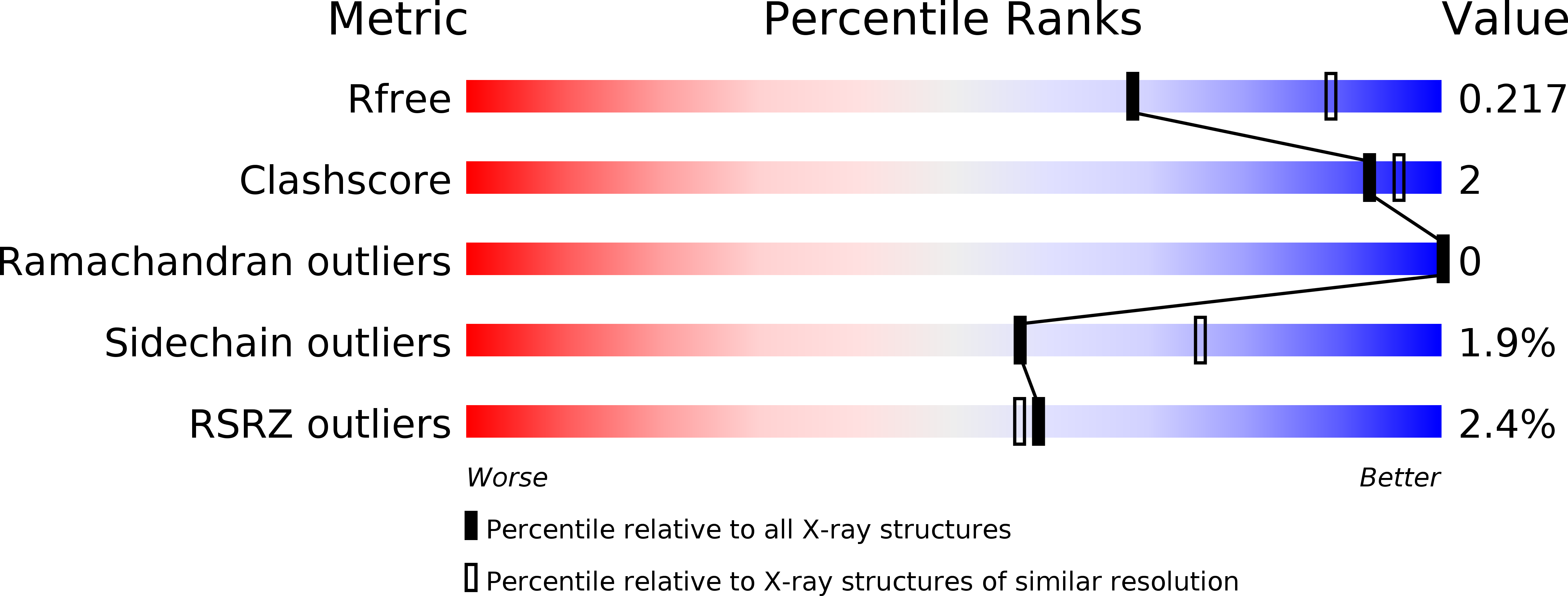The ATP/ADP substrate specificity switch between Toxoplasma gondii NTPDase1 and NTPDase3 is caused by an altered mode of binding of the substrate base.
Krug, U., Totzauer, R., Zebisch, M., Strater, N.(2013) Chembiochem 14: 2292-2300
- PubMed: 24115522
- DOI: https://doi.org/10.1002/cbic.201300441
- Primary Citation of Related Structures:
4KH4, 4KH5, 4KH6 - PubMed Abstract:
Two nucleoside triphosphate diphosphohydrolase isoforms (NTPDase1 and NTPDase3) are responsible for the hydrolysis of nucleotides by the intracellular protozoan Toxoplasma gondii. They constitute about 3 % of the total parasite protein. Despite sharing 97 % sequence identity they exhibit opposite ATP versus ADP substrate discrimination ratios. Here we show by mutagenesis that the residues G492/G493 in NTPDase3 and R492/E493 in NTPDase1 are predominantly responsible for the differences in substrate specificity. Crystal structures of NTPDase1 in complexation with analogues of ATP and ADP reveal that the inverted substrate specificity of NTPDase1 relative to NTPDase3 is achieved by switching from the canonical substrate binding mode to a very different alternative one. Instead of being stacked on top of a helix of the C-terminal domain the nucleotide base is positioned in the interdomain space between the side chains of R108 and R492, recruited from both domains. Furthermore, we show that the NTPDase1 substrate specificity is mainly dependent on the presence of the side chain of E493, which causes repositioning of the ribose component of the nucleotide. All in all, binding by the flexible side chains in the alternative binding mode in NTPDase1 allows for equally good positioning of ATP and ADP with increased activity toward ADP relative to what is seen in the case of NTPDase3.
Organizational Affiliation:
University of Leipzig, Institute of Bioanalytical Chemistry, Deutscher Platz 5, 04103 Leipzig (Germany).


















